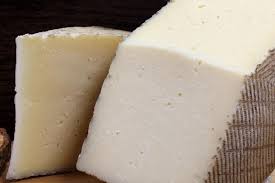Pasteurized vs Unpasteurized: Understanding the Differences and Risks

When it comes to food safety, one of the most debated topics is whether or not to consume pasteurized or unpasteurized products. Pasteurization is a process that involves heating food to a specific temperature for a certain amount of time to kill harmful bacteria, while unpasteurized products are not subjected to this process. In this article, we will explore the differences between pasteurized and unpasteurized products, the potential risks associated with consuming unpasteurized products, and the reasons why some people choose to consume them.
What is Pasteurization?
Pasteurization is a process that was developed by Louis Pasteur in the 19th century to prevent the spread of diseases through food. The process involves heating food to a specific temperature for a certain amount of time to kill harmful bacteria, such as E. coli, Listeria, and Salmonella. Pasteurization is commonly used for milk, cheese, juice, and other dairy and fruit products.
There are two types of pasteurization: high-temperature short-time (HTST) and ultra-high temperature (UHT). HTST pasteurization involves heating the product to 161°F for 15 seconds, while UHT pasteurization involves heating the product to 280°F for 2 seconds. Both methods are effective in killing harmful bacteria and extending the shelf life of the product.
The Risks of Consuming Unpasteurized Products
Unpasteurized products, also known as raw or natural products, have not been subjected to the pasteurization process. While some people choose to consume unpasteurized products because they believe they are more nutritious or have better flavor, there are significant risks associated with consuming these products.
Unpasteurized products can contain harmful bacteria, such as E. coli, Listeria, and Salmonella, which can cause serious illness or even death. These bacteria can be found in raw milk, cheese, juice, and other dairy and fruit products. In fact, the Centers for Disease Control and Prevention (CDC) reports that raw milk and cheese are responsible for more than half of all foodborne illness outbreaks in the United States.
The risks of consuming unpasteurized products are particularly high for pregnant women, young children, the elderly, and people with weakened immune systems. These groups are more susceptible to foodborne illness and are at a higher risk of developing serious complications.
The Benefits of Consuming Unpasteurized Products
While there are significant risks associated with consuming unpasteurized products, some people choose to consume them because they believe they are more nutritious or have better flavor. Proponents of unpasteurized products argue that the pasteurization process can destroy beneficial bacteria and enzymes that are important for digestion and overall health.
Some studies have suggested that unpasteurized products may have higher levels of certain nutrients, such as vitamin C and folate, than pasteurized products. However, these studies are limited and the differences in nutrient levels are not significant enough to outweigh the risks associated with consuming unpasteurized products.
It is also important to note that many of the claims about the benefits of unpasteurized products are not supported by scientific evidence. While some people may prefer the taste of raw milk or cheese, there is no evidence to suggest that these products are inherently better than their pasteurized counterparts.
The Importance of Food Safety
Regardless of personal preferences or beliefs about the benefits of unpasteurized products, it is important to prioritize food safety when making food choices. The risks associated with consuming unpasteurized products are significant and can have serious consequences.
Consumers should always read labels carefully and choose pasteurized products whenever possible. If unpasteurized products are consumed, they should be handled and stored properly to minimize the risk of contamination. Raw milk and cheese, for example, should be refrigerated immediately and consumed within a few days.
Conclusion
In conclusion, pasteurization is a process that is used to kill harmful bacteria and extend the shelf life of food products. While some people choose to consume unpasteurized products because they believe they are more nutritious or have better flavor, there are significant risks associated with consuming these products. Unpasteurized products can contain harmful bacteria that can cause serious illness or even death, particularly in vulnerable populations. Consumers should prioritize food safety when making food choices and choose pasteurized products whenever possible.







